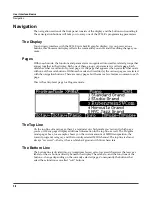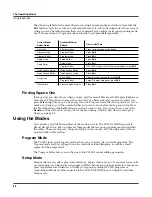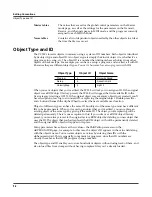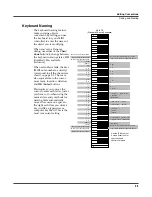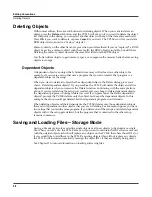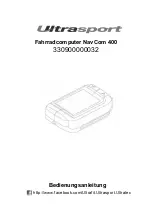
5-2
Editing Conventions
Object Type and ID
Master tables
The values that are set for the global control parameters on the Master
mode page, as well as the settings for the parameters on the Transmit,
Receive, and Channels pages in MIDI mode, and the programs currently
assigned to each MIDI channel.
Name tables
Contains a list of dependent objects needed by the other objects in a file at
the time the file was saved.
Object Type and ID
The PC3LE stores its objects in memory using a system of ID numbers. Each object is identified
by its object type and object ID. An object’s type is simply the kind of object it is, whether it’s a
program, setup, song, etc. The object ID is a number that distinguishes each object from other
objects of the same type. For example you can have a setup, a program, and an effect, all with ID
4 because they are different object types. You can’t, however, have two
programs
with ID 4.
When you save objects that you’ve edited, the PC3LE will ask you to assign an ID. If the original
object was a ROM object (factory preset,) the PC3LE will suggest the first available ID in the
User category (starting at 1025). If the original object was a memory object (user created,) you’ll
have the option of saving to an unused ID, or replacing the original object. Double press the
-
and
+
buttons (beneath the Alpha Wheel) to select the next available user location.
Objects of different types can have the same ID, but objects of the same type must have different
IDs to be kept separate. When you’re saving an object that you’ve edited, you can replace an
existing object of the same type by giving it the same ID. The object you are replacing will be
deleted permanently. There is one exception to this: If you write over a ROM object (factory
preset,) you can always revert to the original factory ROM object by deleting you new object that
uses the ID. The object that you had replaced the ROM object with will be permanently deleted,
and the original ROM object will appear in its place.
Many parameters have objects as their values—the ShiftPattrn parameter on the
ARPEGGIATOR page, for example. In this case, the object’s ID appears in the value field along
with the object’s name. You can enter objects as values by entering their IDs with the
alphanumeric pad. This is especially convenient for programs, since their ID numbers are
usually the same as their MIDI program change numbers.
The object type and ID enable you to store hundreds of objects without losing track of them, and
also to load files from storage without having to replace files you’ve already loaded.
Object Type
Object ID
Object Name
Program
4
Horowitz Grand
Setup
4
Acoustic Split
Velocity Map
4
Light 3
Summary of Contents for PC3LE6
Page 10: ...vi...
Page 24: ...2 10 Startup Software Upgrades...
Page 38: ...3 14 User Interface Basics Quick Song Recording and Playback...
Page 42: ...4 4 The Operating Modes Using the Modes...
Page 64: ...6 16 Program Mode The Program Editor...
Page 134: ...7 70 Setup Mode The Control Setup...
Page 138: ...8 4 Quick Access Mode The QA Editor...
Page 194: ...10 34 Song Mode and the Song Editor Song Editor The EVENT Page...

